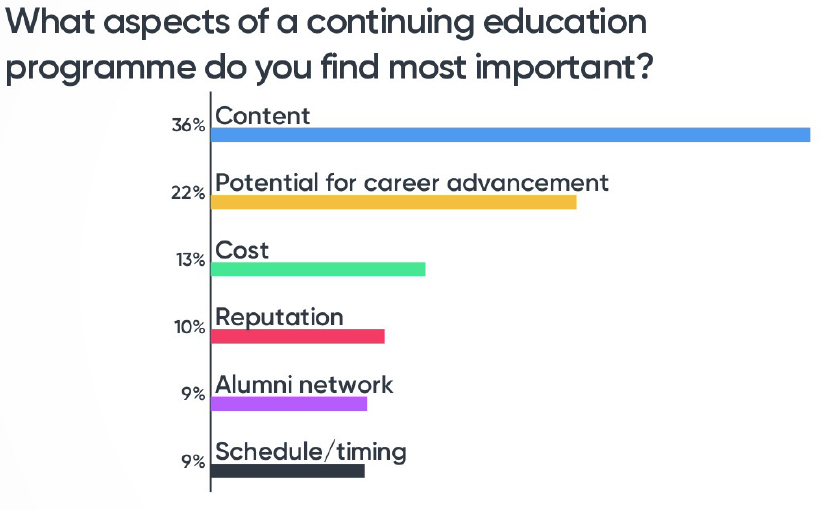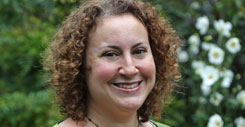
30 March 2020 – A wide, interdisciplinary network enables professionals from across the built environment sector to hone their skills and competencies, whilst stimulating new ideas, approaches and innovations, according to Dr Kayla Friedman, Course Director for the Interdisciplinary Design for the Built Environment Master's and Postgraduate Certificate.
Last year we launched our new Postgraduate Certificate in Interdisciplinary Design for the Built Environment at an event attended by over 70 professionals from a diverse range of built environment professions. In addition to showcasing our new offering, we used the opportunity to solicit opinions on what people felt was needed with respect to education in industry. And we also asked people about what factors they considered most important when choosing a continuing education programme. The results were surprising.

It interested me that the alumni network was tied for last place. For students and alumni of CISL’s sustainable business programmes, the alumni network potential is a high motivation for applying to a course. I’m also aware from collecting data and speaking to alumni who have attended the IDBE programme over the past 25 years, that they rate the professional network they have gained as one of the key benefits of the programme. So this left me with the question, ‘Why don’t most built environment professionals think they need or see the value of a professional network?’
The answer is both obvious and complex. Through informal discussion with my own built environment colleagues, I found that most of them think that they already have a robust professional network from their University studies (typically at more than one University), contacts from previous places of work, and contacts through their professional institutions. Most of the built environment professionals I spoke to feel that they know a lot of people ‘in the profession’ already.
So then I asked those in my own network what they felt their existing contacts offered them. Links to possible jobs was high on the list, as well as hearing about case studies and projects of interest and policy changes or technological innovation. Some people who were more active with their professional institutions spoke about representation on a wider scale and advocacy. For the most part, everyone I spoke to felt that this was good, and enriched their own practice, but couldn’t really see what more they could expect from a network.
So what is the key difference between this and the benefits of the network our IDBE alumni have at the completion of their studies? The main difference is that the IDBE alumni network and student cohorts are interdisciplinary and international. Instead of an echo chamber of similar minded professionals with the same educational backgrounds, the same certifications, and broadly the same interests, the IDBE alumni represent the diverse range of professions that are responsible for our built environments. On the most recent cohort, for example, we have seen students from property development, architecture and design, planning, engineering, utilities and estate management, to name a few. By expanding and diversifying their professional networks, our students develop a more holistic, end-to-end understanding of built environment projects which is key to integrating concepts around sustainability by design.
Our students also come from all over the world meaning they have exposure to different policy regimes, different construction standards, and different standard construction methods. This shared knowledge is crucial to those who want to understand best practices globally to make changes within their organisation and the wider industry.
In short, they provide a new and different perspective to one another that creates a stimulating and progressive environment.
Our IDBE alumni talk about how their fellow students have really opened their eyes to opportunities and viewpoints that they have otherwise not been exposed to in their normal professional networks. They talk about the free flow of honest communication between disciplines and how this has enriched their own understanding of their projects and the teams they engage with. They talk about the real and tangible value they have found in networking with others who work in the built environment but from other disciplines.
The siloed nature of the built environment, and its subsequent impact on project outcomes is not an unknown problem, is one of the primary reasons that the IDBE was created. The segregated nature of the professions and the typically tightly delineated roles within the lifecycle of a project are a known barrier to achieving efficient, sustainable, and resilient projects that are fit for the future.
Yes, we need professionals to work more collaboratively on their projects, but we also need more casual conversation and brainstorming between the professions. We need more camaraderie and connection informally, as this will stimulate new ideas, new approaches, and new innovations. The pressure is high on live projects where money is involved and deadlines must be met. Professional boundary walls are subsequently high and this is not the right place to ‘network’ although interdisciplinary collaboration is critical.
It is therefore the role of the wider professional network to hone and develop these skills and competencies. Our IDBE alumni tell us that the power and impact of an interdisciplinary network for built environment professionals is immeasurable. The industry tells us that the need for an interdisciplinary network for built environment professionals is critical. So why don’t our professionals think that they need one? Naturally, they are products of their own disciplines so they believe they already have a network. They do, of course, but they don’t yet know what benefits an interdisciplinary network can bring them.
Read more about the impact that the IDBE Master’s and Postgraduate Certificate have had on our alumni.
More information on the programmes is available here. You can sign up for an IDBE virtual open day webinar here.





